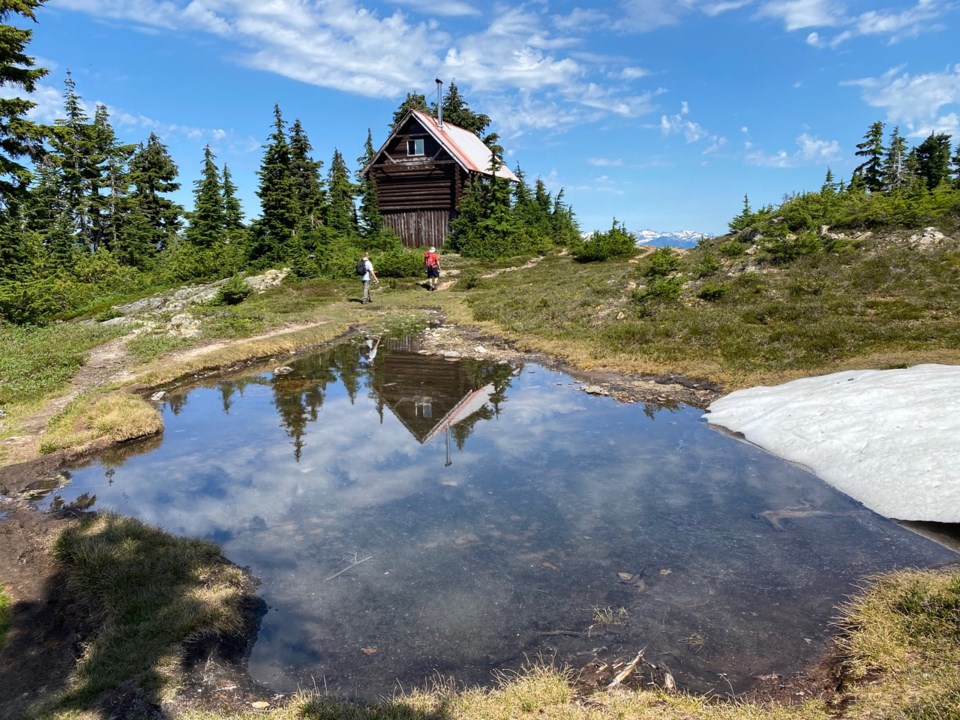Since the first column two weeks ago I have been made aware that BC Parks urges all wheel drive or 4x4 vehicles to access the Tetrahedron Park parking lot due to the damaging impact of two-wheel drive vehicles on road integrity. Also, I referenced the lake below Panther Peak. George Smith of the Tetrahedron Outdoor Club has provided the following updated information. “While the SCRD had honoured John Hind-Smith by informally labelling the lake in 2004, the lake was actually formally gazetted by the province only this year as mala/Hind-Smith Lake. Albert Louie was a highly respected elder whose shíshálh ancestral name was mala John Hind-Smith was likewise a highly respected elder of the conservation community on the Sunshine Coast. The shíshálh Nation pursued this double name with the BC government to honour both remarkable men.”
Sunshine Coast Natural History Society naturalists spent three days within the park in mid-August, with two days spent in the alpine area of Mt. Steele and the third day hiking the 12 kms down the trail to the parking lot. During this time, we recorded all species of bird, mammal, insect, mushroom, lichen and plant that we observed. Of course, this was just a three-day snapshot of the biology of the park and visits at different times of the year will record different species.
Alpine areas anywhere in the world are notable for their specialized species, rather than their diversity, which is always very low because of the extreme climatic conditions. The alpine area of Mt. Steele for example may be under snow cover for as much as eight months a year. During our two-day stay in the Mt. Steele alpine, we recorded about 20 species of birds, almost all of which can be seen at lower elevations. A single pine grosbeak was the “best’’ species recorded, as this tends to be a high elevation species that rarely wanders to lower elevations.
Our stay in the alpine was notable for an unexpected bird, a juvenile brown-headed cowbird. Before we arrived, this bird was frequenting the cabin area and it quickly made friends with us (or was it the other way around?) As we sat around the vicinity of the cabin, the bird would be within a metre of us, and sometimes walking across our feet. One evening we made the trek from the cabin to the summit of Mt. Steele, a climb of about 500 feet elevation and maybe a kilometre distance. And who accompanied us all the way to the top...the cowbird! This fixation is fairly typical behaviour for juvenile cowbirds, an evolutionary hangover from their days of following the buffalo on the prairies.
To report your sightings or questions contact [email protected] or 604-885-5539. Good Birding.




